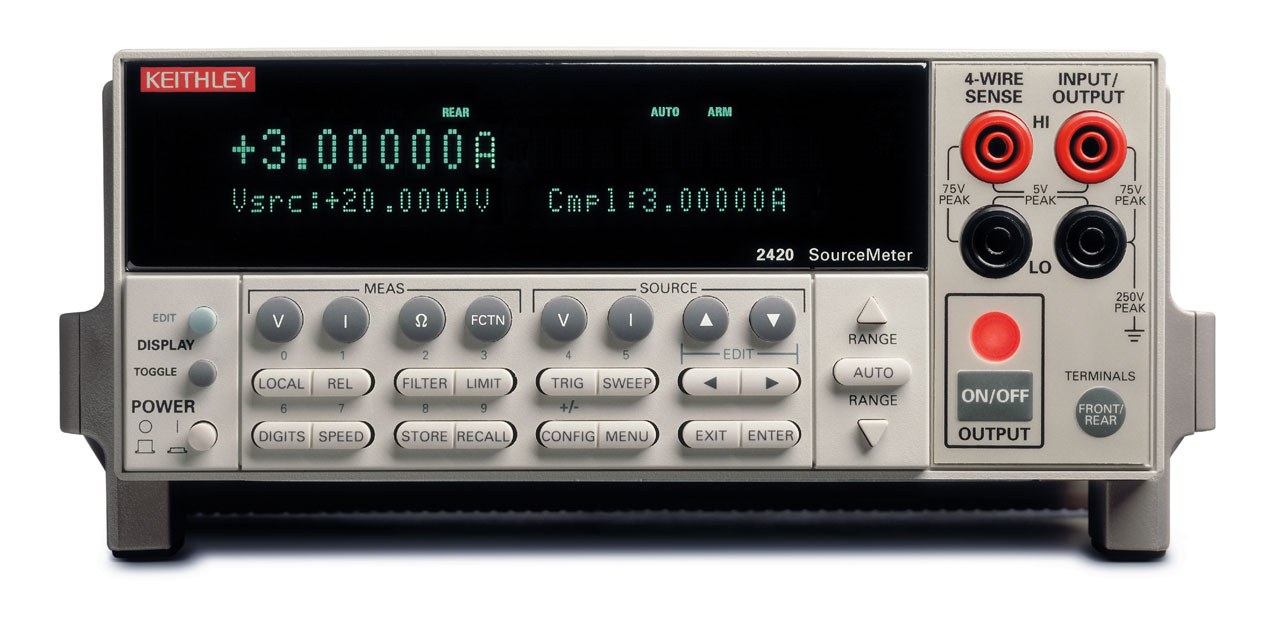Contact us
Call us at
Available 9 AM - 5 PM CET Business Days
Download
Download Manuals, Datasheets, Software and more:
Feedback
Get Your Power Semiconductor Devices to Market Faster
Demanding applications in automotive electrification and RF communications require wide bandgap semiconductor technology such as SiC and GaN along with the continued use of traditional silicon. SiC and GaN offer higher voltage operating frequencies, and higher temperatures with lower power loss compared to Si. Understanding the electrical performance of SiC and GaN will help enable a strong value proposition for their use in many emerging power applications. Get to market faster for your power semiconductor devices while minimizing device failures in the field.
I-V Characterization Measurements for Wide Bandgap Semiconductors

Basic transistor family of curves.
Learn More:
DC I-V Characterization of MOSFET Devices Using KickStart Software
I-V Characterization
I-V Characterization is a fundamental method of understanding the current versus voltage relationship of silicon, silicon carbide, and gallium nitride’s fundamental properties. Using instruments like SMUs or parameter analyzers and appropriate software, an I-V graphical curve is generated that is used to show the relationship between the current flowing through an electronic device or circuit and the applied voltage across its terminals. The most common set of I-V curves is the family of curves.
Test Across Wide Power Envelopes
Characterizing SiC or GaN wafer- and packaged-part level devices for electrical performance requires learning new techniques, such as utilizing higher power instruments, dealing with the challenges of probing and making low level measurements such as picoamp levels of leakage current in the presence of high breakdown voltages. With wide bandgap semiconductors, it’s more common to be sourcing voltages as high as 3000 V and currents up to 100 A. Just as important is optimizing the testing system to reduce the amount of time it takes to change setups for making ON-state, OFF-state, and capacitance measurements.

Typical ON-state measurement setup.
Learn More:
Solving Connection Challenges in On-Wafer Power Semiconductor Device Test Application Note

Testing high voltage of SiC devices.
Learn More:
Breakdown and Leakage Current Measurements on High Voltage Semiconductor Devices
Measuring MOSFET Gate Charge with the 4200A-SCS Parameter Analyzer
Breakdown Testing of Power Semi Devices
A device’s OFF-state breakdown voltage determines the maximum voltage that can be applied to it. The primary withstand voltage of interest to power management product designers is the breakdown voltage between drain and source of a MOSFET or between the collector and emitter of an IGBT. For a MOSFET, the gate can be either shorted or forced into a “hard” OFF state, such as by applying a negative voltage to an n-type device or a positive voltage to a p-type device. This is a very simple test that can be performed using one or two source measure unit (SMU) instruments.
Connecting Instruments to Prober and Test Fixtures
Connecting high power instruments to probe stations and test fixtures can be a complicated task. Improper connections can often lead to measurement errors. The 8020 High Power Interface Panel provides a highly accurate, flexible, and easy to use interface between Keithley SMUs and a variety of semiconductor probe stations or custom test fixtures. The interface panel has six measurement pathways accommodating 3 kV, 200 V, and 100 A measurements. You can configure five of the pathways with a variety of output connector types to match your probe station. You can configure four pathways with the optional bias tees. This provides high-voltage C-V measurements on up to four pins of the device under test.

8010 High Power Device Test Fixture enables safe and easy connections for testing high power devices up to 3 kV or 100 A.
Learn More:
How to Perform a Simple Breakdown Test on a High Power High Voltage IGBT Device
Safety First When Conducting High Power Tests
Safety should always be at the top of your mind when conducting high power tests on wide bandgap semiconductors. Designing a safe and compliant test fixture for the lab is not trivial. The 8010 High Power Device Test Fixture provides a safe, low-noise, complete environment for testing a variety of packaged device types up to 3000 V and 100 A. The replaceable socket module test boards allow for a variety of package types, including user-supplied socket types.
Automate Power Sequencing for I-V Characterization
Save the trouble of programming your test with Keithley’s Automated Characterization Suite (ACS) Software. ACS is a flexible, interactive software test environment designed for device characterization, parametric test, reliability test, and even simple functional tests. ACS supports a wide array of Keithley instrumentation and systems, hardware configurations, and test settings. With ACS, users are able to configure their instrumentation using the automated hardware management tool and perform tests quickly without the need for programming knowledge.

Power sequencing for GaN HEMT I-V characterization.
Learn More:







